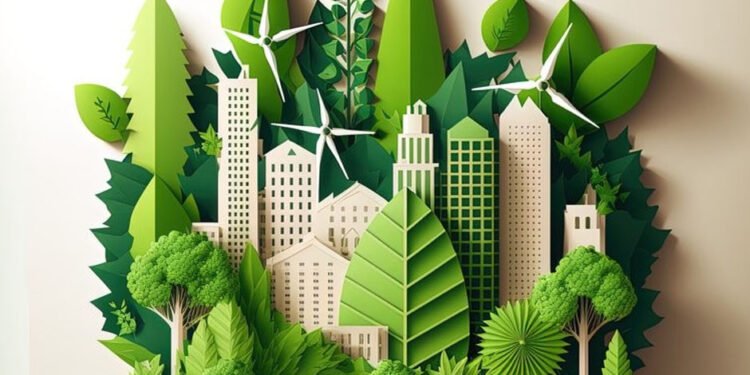Key Takeaways:
- Discover innovative strategies shaping sustainable construction practices.
- Learn how technology integrates with sustainable construction efforts.
- Understand the role of sustainable materials in modern construction.
- Explore how policy and regulation impact sustainable building practices.
Introduction to Sustainable Construction Practices
The construction industry is profoundly transforming as it increasingly shifts toward sustainability. Projects prioritizing environmental stewardship aim to blend functionality and aesthetics with ecological considerations. Whether focused on residential projects or Orlando commercial construction, the strategies implemented aim to minimize carbon footprints while maximizing resource efficiency. Innovative materials, forward-thinking designs, and the latest technology are at the forefront of this paradigm shift.
Central to these efforts is reducing environmental impact throughout a structure’s lifecycle. Sustainable building practices are more than just minimizing waste; they encompass a holistic environmental conservation approach to creating eco-friendly yet functional and durable structures. This commitment to sustainability reflects a broader understanding of the ecological balance required for a healthier planet.
The Role of Technology in Green Building
Technology serves as a cornerstone in achieving sustainable construction goals. Advanced tools like Building Information Modeling (BIM) and energy management systems offer unparalleled opportunities to optimize both the construction and operation phases of a building. These tools allow architects and engineers to design precisely, ensuring minimal waste and maximized energy efficiency. They enable precise resource management, energy efficiency, and waste reduction, which are crucial for modern sustainable practices.
Moreover, innovations such as intelligent building automation significantly enhance the sustainability credentials of new developments. With intelligent systems, buildings can adjust energy consumption in real time based on needs and occupancy, thereby minimizing waste. These technologies facilitate real-time monitoring and control, ensuring buildings remain environmentally friendly throughout their lifecycle, ultimately reducing operational costs and environmental impact.
Sustainable Materials: A Cornerstone of Eco-Friendly Construction
The foundation of sustainable construction lies in the choice of materials. Eco-friendly materials such as recycled steel, bamboo, and green concrete provide robust alternatives to traditional options, offering durability without compromising environmental integrity. Using these materials significantly reduces the carbon footprint, aligning with the broader sustainability goals.
Using sustainable materials is not just an industry trend but a compelling necessity. These advances enhance structural performance and contribute to the conservation of natural resources. Using abundant and renewable materials like bamboo, the construction sector sets a precedent for future methodologies prioritizing planetary health over short-term gains.
This approach also opens the field to new jobs and innovations as manufacturers and engineers collaborate to advance materials that can withstand climatic stress while maintaining minimal environmental footprints.
Innovative Design Techniques for Sustainability
Design innovations play a crucial role in the quest for sustainability. Incorporating elements that maximize natural light, improve insulation, and enhance ventilation can significantly decrease a building’s reliance on artificial energy sources, leading to substantial energy savings.
Features such as green roofs, solar panels, and rainwater harvesting systems lead the charge in innovative, sustainable design. Green roofs, for example, add an insulating layer that reduces heating and cooling costs. They contribute to energy conservation and enhance modern buildings’ aesthetic and functional appeal. These features show that sustainability and style are not mutually exclusive but complementary in creating harmonious living and working spaces.
Adoption of such design innovations requires a shift in mindset. It encourages architects and designers to think outside the box and leverage nature as a cooperative partner in building design. The result is reduced carbon emissions and improved quality of life for occupants, showcasing the full spectrum of benefits inherent in sustainable design.
Policy Impact on Sustainable Construction
Government policies and regulations are pivotal in shaping the journey toward sustainable construction. Legislation mandating energy efficiency and carbon reduction drives widespread adoption of green building practices. Such mandates ensure that construction industry participants align with global sustainability standards, offering both challenges and opportunities for professionals in the field.
Understanding these regulatory frameworks is essential for industry professionals. Not only do they facilitate compliance, but they also open avenues for potential incentives and recognition. These policies highlight the economic and environmental benefits of sustainable practices, promoting innovation within the industry and enabling access to new markets driven by consumer demand for greener options.
Furthermore, government support in the form of tax credits or subsidies for sustainable buildings incentivizes the transition toward eco-friendly practices, making it a financially viable option for many developers and builders.
Future Prospects of Sustainable Construction
The future of sustainable construction is promising, bolstered by technological advancements and growing ecological awareness. A shift towards net-zero buildings and sustainable cities is becoming more pronounced, driven by continual innovation and collaboration across the industry.
This commitment to sustainability is expected to transcend traditional construction paradigms, fostering healthier and more resilient urban environments. As cities expand and the global population grows, integrating sustainable practices will be critical in addressing the challenges of climate change and urbanization.
The industry must invest in research and development, harnessing interdisciplinary collaboration to uncover new methods and technologies. These innovations will fuel the shift toward increasingly connected, sustainable urban spaces. Integrating these practices will preserve environmental integrity and enhance the quality of life and economic vitality of communities worldwide.
Conclusion
As sustainable practices become integral to construction, the sector stands on the cusp of a transformative era. By embracing innovative techniques, technologies, and materials, the industry reduces environmental impact and sets new standards for future developments. This evolution promises greener buildings and a healthier planet for generations to come.
The essential role of sustainable construction in shaping a vibrant and eco-friendly future is clear. As the blueprint for sustainable living takes shape, cooperation among stakeholders—from designers to policymakers—will be crucial in realizing this vision, ensuring that every new building is a testament to ingenuity and environmental respect.












